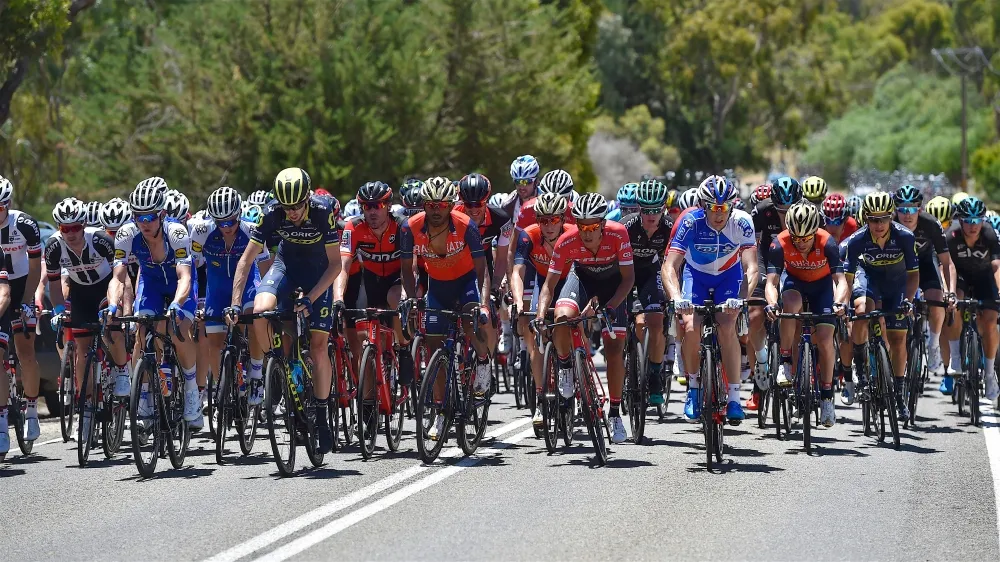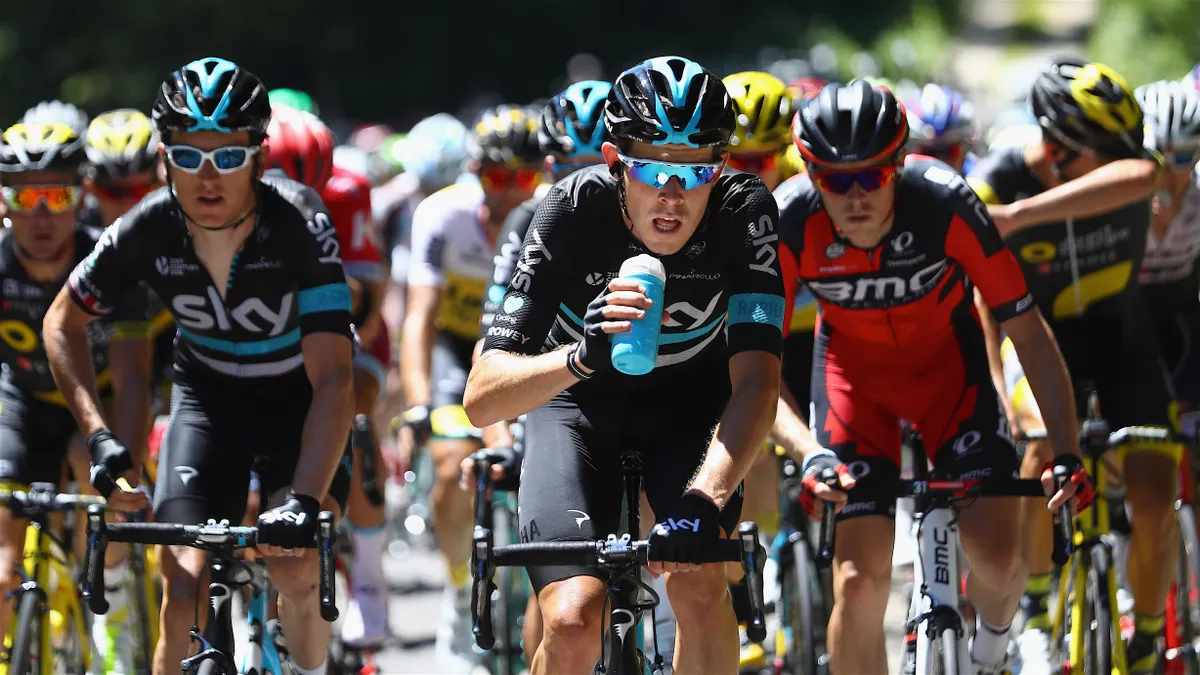In the evening of the opening stage of the Tour Down Under, BikeRadar sat down with Team Sky and Great Britain rider Luke Rowe at the team hotel in Adelaide. In the day’s earlier stage, temperatures hit a sizzling 45 degrees Celsius, so we discussed how riders prepare, ride and recover in such extreme heat.
Leading up to the day’s stage, weather forecasts predicted temperatures well into the forties, and as with any race Rowe described how preparing for a race or important ride can begin well before the day itself.
1. Prepare with proper hydration and carbo-loading
“It’s common sense really, we all knew the forecast and how hot it was going to be so it’s a case of being hydrated in the morning and drinking plenty. Starting the race hydrated begins 48 hours before and then making sure you’re topped up with water and electrolytes throughout the race.
"It’s also a well known fact that you burn more carbohydrates in the heat as your body is under more stress, so topping up the night before with a bigger plate of pasta is key.”
2. Eat, eat, eat!
During the race itself, professional bike riders can burn well over five thousand calories in a usual WorldTour race day. With this in mind, eating on the bike is vital and because it's a race, a quick sandwich at your favourite cafe stop is out of the question.
“We aim for sixty to ninety grams of carbohydrates per hour. The golden rule is to eat every 20 minutes, and have say a 30-gram portion each time. Whether that’s through the race food that the soigneurs prepare, such as rice cakes, or a SIS energy bar or gel that can do the same job.
"Every twenty minutes you have to try and get it down. In the heat, on a day like today, the last thing you want to be doing is eating. But you’ve got the DS [director sportif] in the car reminding you to keep eating so you stay on top of it.”

3. Keep your carbohydrates topped up
Fuelling on longer rides can be just as important for recreational riders, and remembering to eat shouldn’t be a challenge. However, in a race situation it can be more challenging.
We actually almost ran out of bottles in the car today, which never happens
“It sounds like such a simple thing, but when you’re caught up in the heat of a race it can be quite hectic and you sometimes just forget. You’re doomed to fail if you don’t though, so keep on top of it every 20 minutes aiming for that sixty to ninety grams of carbs.
"I tend to try and get the solids down in the first part of the race and then when you’re fed up with that, move onto the gels we get from SIS. They pack the punch that you need and they’re easy to get down, versus eating a load of food in the heat. You also know that in these temps you’re getting everything you need. I also had the espresso flavoured caffeine gel in the final 25 kilometres for an extra kick.”
4. You need to drink more than you think
As temperatures soared to the mid-forties in Adelaide, Rowe went on to explain how much fluid each rider needed to take on board to stay hydrated.
“We actually almost ran out of bottles in the car today, which never happens. I’d say it was 3-4 bottles an hour (500ml), one every 15 minutes. So that was 15-16 bottles today, or seven to eight litres in less than three and a half hours.”
This can be more challenging for those riding without a support car and an infinite supply of bidons. However, stopping to fill up your bottles mid-ride in the heat is vital and should be planned into your ride.
5. Recover
Post-race, it is important to begin recovery as quickly as possible in a stage race. Rowe opts for a recovery shake with a mix of protein, carbohydrates, electrolytes and minerals, which "tastes horrible, but gets the job done."
